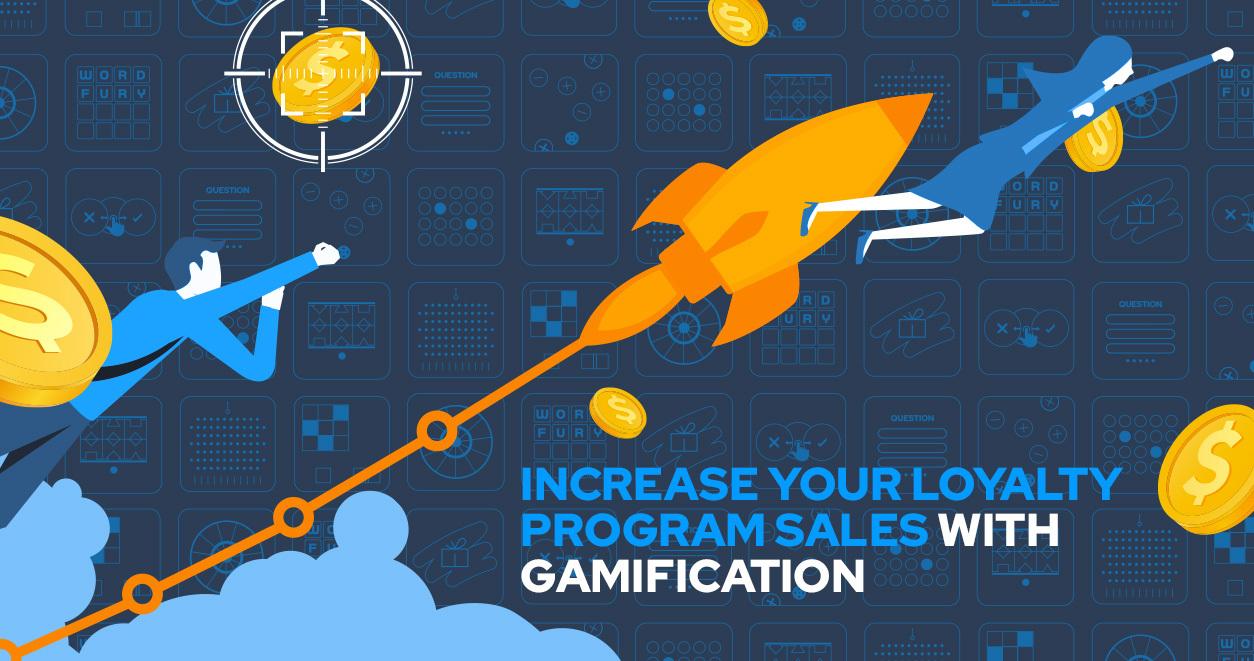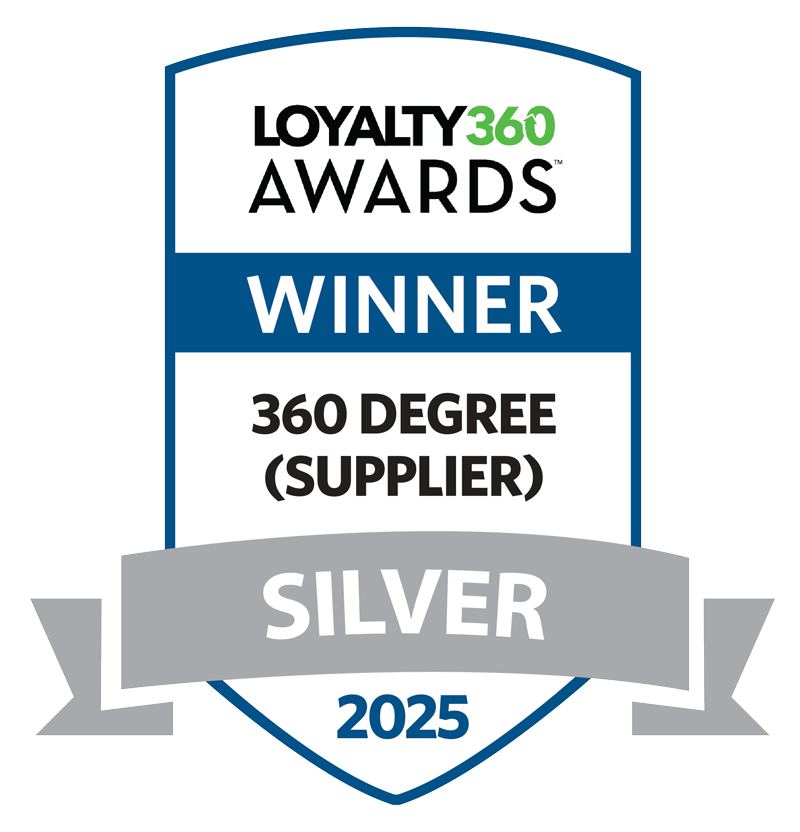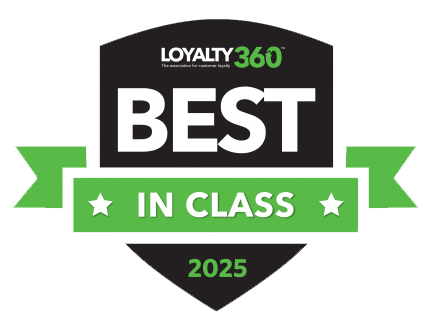Acquiring new customers requires a lot of time and money. It costs five to six times more to get a new customer than to reactivate an old one. That’s why businesses focus so much on what drives customer loyalty and how to enhance it.
Learn how gamification can bring a fresh take to your customer loyalty strategies.
What Drives Customer Loyalty?
So, what drives customer loyalty? Emotion. And emotional appeal comes in many forms.
Benefits
Benefits make people feel special, whether they include direct communication between brands or first picks of products in the B2B world. In the B2C world, benefits usually concern loyalty program awards.
Around 53% of consumers choose a business based on value, with 30% specifically mentioning loyalty benefits.
Quality Products and Services
Without products or services, there aren’t customers, and quality is a major loyalty-driving factor. Once someone uses a product or service and likes the quality, 46% of consumers say that’s where their loyalty to a brand starts.
Personality/Values
People connect with other people, and when a brand shows its humanity, it’s easier to connect with it. Personality is always at play, whether catering to a mass of customers or making intimate business deals.
For example, people are paying attention to how a company improves the world: 54% of U.S. consumers feel more loyal to a brand that advocates for their passion for social issues.
Customer Service
No one likes having a negative experience—37% of consumers say they left a brand over one bad experience. If a merchandiser doesn’t provide goods on time, businesses will look for a new supply partner. It is the same for a customer given a broken product without a replacement.
People want friendly, dependable customer service from the brands they’re loyal to. In 2022, 83% of consumers said customer service was a critical loyalty driver.
Community
Think about how people wear certain brands as a badge of honor—people are willing to be part of a community they like.
Building a healthy community around your business creates a continuous loyalty cycle because customers hype each other up; excitement in a brand community is contagious.

Short-Term vs Long-Term Loyalty: The Differences
There are two types of customer loyalty: short-term and long-term. Businesses must focus on growing both types and using them to boost customer loyalty.
Short-Term Loyalty
Short-term loyalty fosters customer loyalty without either party committing to a relationship. Think of limited events that engage and gain loyalty without an evergreen program's (potential) restrictions.
It’s a great tool for businesses that don’t have the resources to maintain a loyalty program or want to focus on a specific product or period of time because there is a designated start and end time.
Short-Term Examples
Short-term loyalty gamification events include:
- Collect & win games/campaigns
- Digital punch cards
- Multi-action dashboards
- Sweepstakes
The gamification techniques listed above are loyalty drivers that target community, personality, and benefits. People can play together and discuss what they would do with the prizes.
Your gamification method can reveal a lot about your brand’s personality. Digital punch cards show that you love action and knowing results immediately, while sweepstakes are about the slow burn of building anticipation.
For example, Alienware wanted an experience for its consumers that was both engaging and fun. Partnering with CataBoom, they developed a four-day Collect & Win experience. Daily games were released.
Through pure play, with no transactions, players collected part of a spaceship they could complete before blasting into space (keeping with the brand's name). This short but sweet campaign gained 6,000 unique players per game each day.
Long-Term Loyalty Programs & Loyalty Amplification
Long-term loyalty drivers positively influence a brand’s relationship with consumers. Loyalty programs embody the commitment between a person and a business. Programs tend to engage with their members often and encourage consumers to keep coming back to your brand and make purchases.
Long-Term Examples
Long-term loyalty programs are pretty self-sufficient; they tend to run on how often a consumer makes a purchase. Some focus on building points through purchases or giving specific benefits (like free shipping) when a loyalty member spends a certain amount of money.
But sometimes, the typical loyalty program doesn’t cut it. Customers get bored. So, you need to figure out other long-term loyalty drivers to highlight the brand's personality, quality products, and community.
Luckily, gamification can enhance the long-term relationship between consumers and brands by providing non-transactional fun. When TGI Fridays wanted to interact with their loyalty members, they came to CataBoom. Together, we created a game for their app that’s just for loyalty members.
The program was called Five Fridays. Members could play when a month had five Fridays in it. They could win points, free food, and other rewards. The game earned two times more than the normal engagement rate.
Use Gamification to Refresh Loyalty Amplification Goals
When figuring out what drives customer loyalty, most loyalty programs usually need either a boost or a complete overhaul—that’s when you use gamification. Depending on your loyalty goals, short- or long-term gamification methods will suit you better.
If your goal is to get more people to interact with your brand, then short-term gamification would be better because a variety of people are more likely to participate since it doesn’t feel as corporate as a loyalty program. If you have long-term loyalty goals, you can create a community event through a custom game to enhance loyalty members’ engagement rates.
With the help of CataBoom, Taco Bell created a digital version of their early 2000s Coin Drop countertop game for their app. Loyalty members could play the game to win free food in exchange for rounding their orders up to support the Taco Bell Foundation.
It’s a real win-win for everyone. The foundation got more donations, participants won prizes, and Taco Bell experienced more loyalty and engagement from the game.
Let CataBoom Help You with Your Customer Loyalty!
Whether your needs are short- or long-term, CataBoom can return fun to your loyalty acquisition strategies. Both playful and functional, CataBoom’s game engine has provided many businesses with opportunities to connect with their consumer base in new and engaging ways.
Curious to see what we can do for your business? Contact us today!








